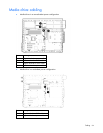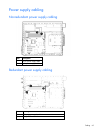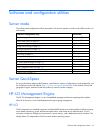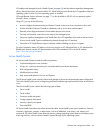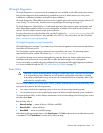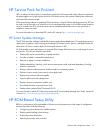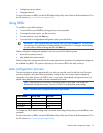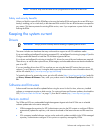Software and configuration utilities 72
HP Service Pack for ProLiant
SPP is a release set that contains a comprehensive collection of firmware and system software components,
all tested together as a single solution stack for HP ProLiant servers, their options, BladeSystem enclosures,
and limited HP external storage.
SPP has several key features for updating HP ProLiant servers. Using HP SUM as the deployment tool, SPP can
be used in an online mode on a Windows or Linux hosted operating system, or in an offline mode where the
server is booted to the ISO so that the server can be updated automatically with no user interaction or
updated in interactive mode.
For more information or to download SPP, see the HP website (http://www.hp.com/go/spp).
HP Smart Update Manager
The HP SUM provides intelligent and flexible firmware and software deployment. This technology assists in
reducing the complexity of provisioning and updating HP ProLiant Servers, options, and Blades within the
data center. HP SUM is used to deploy firmware and software in SPP.
HP SUM enables system administrators to upgrade ROM images efficiently across a wide range of servers
and options. This tool has the following features:
• Enables GUI and a command-line, scriptable interface
• Provides scriptable, command-line deployment
• Requires no agent for remote installations
• Enables dependency checking, which ensures appropriate install order and dependency checking
between components
• Deploys software and firmware on Windows and Linux operating systems
• Performs local or remote (one-to-many) online deployment
• Deploys firmware and software together
• Supports offline and online deployment
• Deploys necessary component updates only
• Downloads the latest components from Web
• Enables direct update of BMC firmware (HP iLO)
For more information about HP SUM and to access the HP Smart Update Manager User Guide, see the HP
website (http://www.hp.com/go/hpsum/documentation).
HP ROM-Based Setup Utility
RBSU is a configuration utility embedded in ProLiant servers that performs a wide range of configuration
activities that can include the following:
• Configuring system devices and installed options
• Enabling and disabling system features
• Displaying system information
• Selecting the primary boot controller



